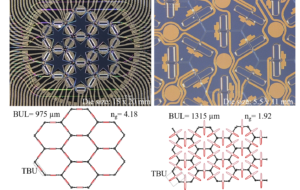Professor Capmany was awarded in 2016 with a prestigious European Research Council (ERC) Advanced Grant to design, manufacture and characterize a universal, multifunctional photonic chip. Now, in relation to that grant, he has obtained a Proof of Concept grant, where he and his team in the Photonics Research Labs of the iTEAM Research Institute will carry out the Field Programmable Photonic Arrays project (FPPA), whose objective is the technological development of an integrated photonic matrix with programmable gates, patented by UPV. With this type of grant, valued at €150,000, the ERC aims to foster transferring the results obtained in the Excellent Science ERC projects to the marketplace. The FPPA project kicked off in October and will last one year and a half.
Creation of a new spin off
Other of the aims of the project is the launching of a new UPV spin-off, whose activity will be focused on the development and commercialization of these new programmable photonic devices. They have a general purpose and they can be used, for example, in 5G digital communications, sensors, Internet of Things, artificial intelligence and quantum information systems, among other applications.
 “The FPPA device,” says Capmany, “shares similar features with FPGA, used in electronics, although it is also different in several significant aspects. FPGA means more than 50% global market of the complex electronic devices, and our aim is for FPPA to have a similar evolution and market share in parallel with the development of the embedded photonics. Since it is a programmable and highly versatile device, it can be used in almost any field of application, not only in systems that combine radio and optics.”
“The FPPA device,” says Capmany, “shares similar features with FPGA, used in electronics, although it is also different in several significant aspects. FPGA means more than 50% global market of the complex electronic devices, and our aim is for FPPA to have a similar evolution and market share in parallel with the development of the embedded photonics. Since it is a programmable and highly versatile device, it can be used in almost any field of application, not only in systems that combine radio and optics.”
From the iTEAM to the market
The ERC, created by the European Union in 2007, is the main European funding organization to for pioneering research. Every year, it selects and funds excellent researchers in order to implement projects in Europe, and the Proof of Concept Award Program contributes to bring the results of their projects close to the market.
These funds can be used to search for new business opportunities, prepare a patent request about the ERC project or launch new companies, among other options.
“This grant,” concludes Capmany, “will allow us to validate the work, pioneer in programmable photonic matrices, which we have been developing in the Photonics Research Labs since 2016, and it will make its commercialization easier thanks to a new spin-off that will begin its activity in the coming months.”
Read that news item on the UPV website!

